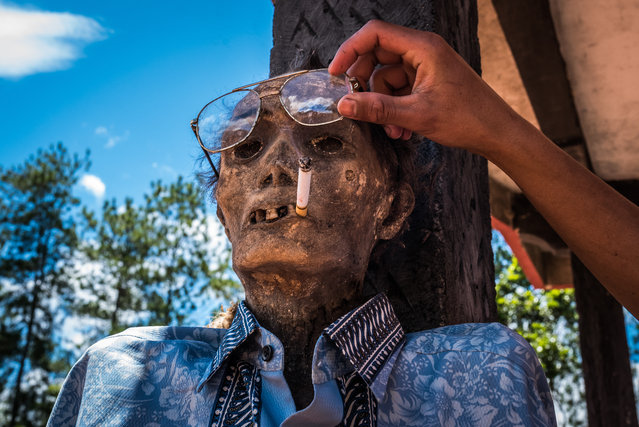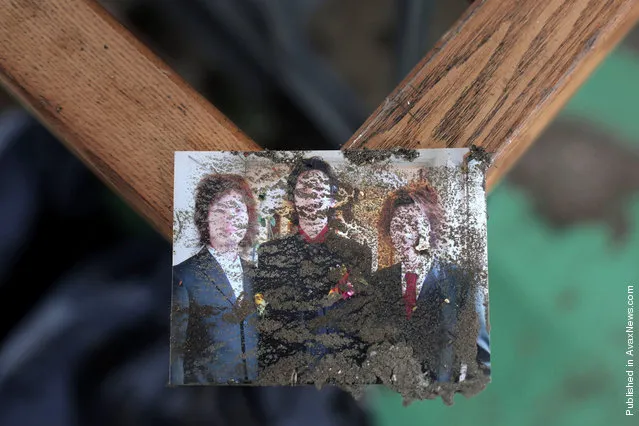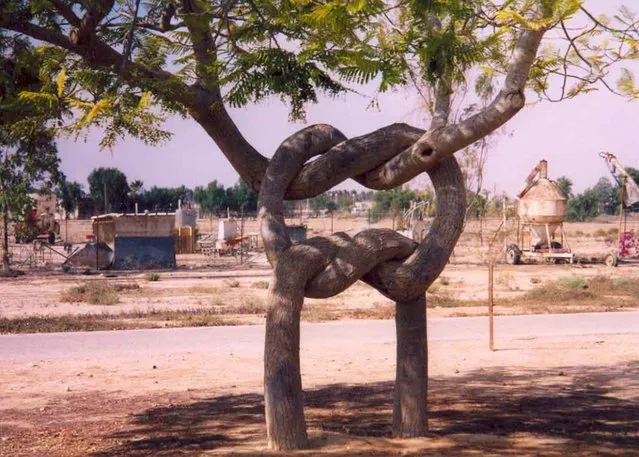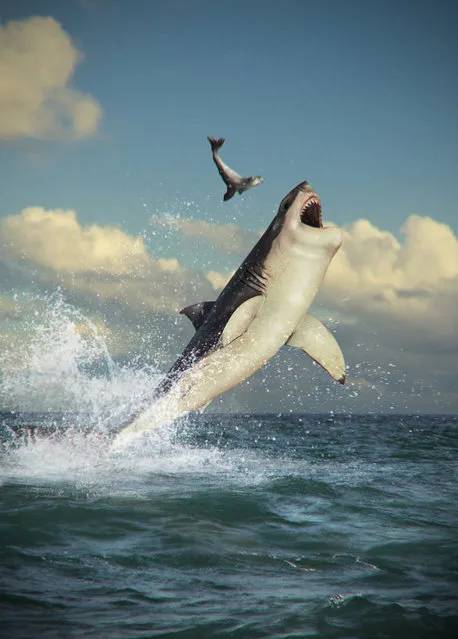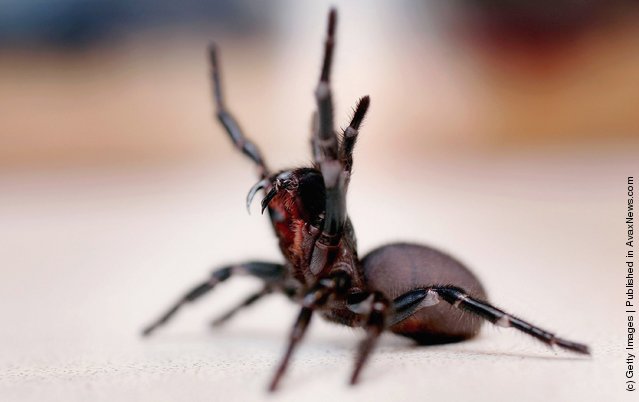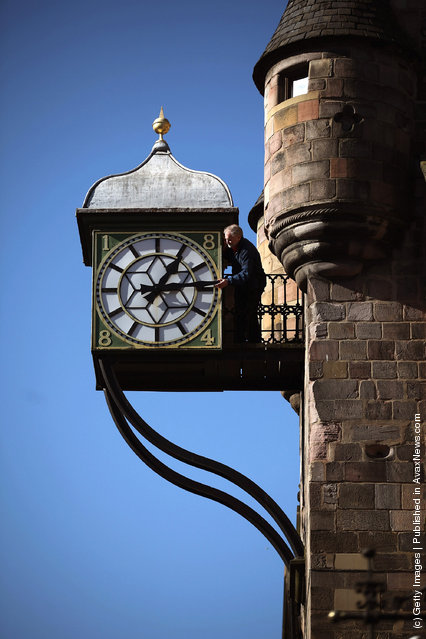
Alan Wilson, Director of James Ritchie & Son clockmakers, founded in 1809, adjusts a clock face at the Cannongate Tobooth to British Summer Time on March 21, 2012 in Edinburgh, Scotland. The Tolbooth, built in 1591, was where tolls and public dues were collected. The clock face dates back to 1820 and replaced an earlier clock from the 17th Century. Clocks will be put forward by one hour on Sunday March 25, 2012 at 1.00am and British Summer Time (BST) will officially start. (Photo by Jeff J. Mitchell/Getty Images)
24 Mar 2012 09:25:00,post received
0 comments


